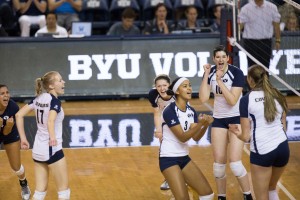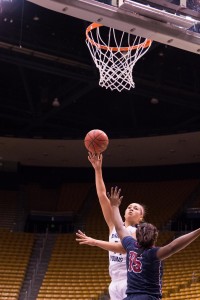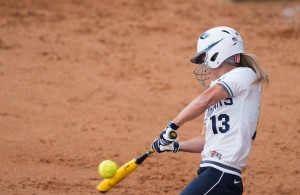
Women’s sports haven’t always gotten the audience and coverage they deserve in the athletic world despite the athletes’ talent and endurance on the courts and playing fields.
Men’s sports such as football, basketball and volleyball see more fan attendance and television coverage.
Sterling Randle, sports editor with the BYU Universe newspaper, gave insight on the top sports covered by the paper. “Football is number one. Men’s basketball is number two, and then there is a four-way tie for third with women’s soccer, men’s and women’s volleyball and women’s basketball,” he said.
On a televised level, stations cover sports that will catch the viewers’ eyes. Christopher Nestman, a reporter for Local News 8, agrees. The sports covered on a regular basis are men’s football, basketball and track. The station even covers high school football, boys’ basketball and sometimes wrestling.
“Those are the sports that draw larger audiences and larger interests. Hence, more eyeballs watching our screen,” Nestman said.
But the top sports don’t remain the same; they change each season depending on the success of the team. The exceptions are football and basketball. Audience numbers and coverage remain high for these two sports continuously.
BYU men’s sports tend to draw in a larger crowd than do women’s sports. Men’s sports show higher fan interest, increased marketing for upcoming games and a more intense style of playing.
“Women’s sports have more endurance, while men’s have fast attack plays,” said Jeff Judkins, BYU women’s basketball head coach. “For instance, in volleyball you see more rallies with the women and more kills with the men.”
Judkins believes if people came to the women’s games they would get drawn in. Getting people there in order to draw them in is the issue. He said the women’s team has to compete with men’s volleyball, the holidays, the cold weather that discourages spectators from walking to the Marriott Center, high school sports and the Jazz.

Though there is continuous competition for bringing in a crowd, the women’s teams have been grateful for the fans who do come out and support them.
“We are grateful to our loyal fans who keep coming back every year, and we welcome newcomers to come cheer us on,” said Morgan Bailey, a senior and forward for the women’s basketball team.
The women’s basketball team is ranked No. 2 in league for attendance, with an average of 900 fans per game.
“In the Marriott Center it feels like a lot less, because it is so big,” Bailey said.
The women’s volleyball team also appreciates the support it receives.
“We get a pretty great crowd at our volleyball games,” said Tia Welling, who played as a defensive specialist and libero for the women’s team before graduating. “I don’t think we have ever had less than 1,000 fans unless it was an early game, but even those games had a solid crowd.”
Both Bailey and Welling agreed that a larger crowd helps them and their teams perform at a higher level.
“Volleyball has a huge mental aspect to it, including the ability to make good decisions quickly and problem-solve in time of stress. Having a large, loud crowd makes it difficult for the opponent to respond to the energy working against them,” Welling said.
The larger the crowd, the higher the chance for more media coverage. Judkins said that on a local level, the women’s basketball team gets pretty decent coverage. He said two newspapers, The Daily Herald and The Universe, do well with covering the games. For the past two years, BYUtv has aired the games, and radio coverage has improved. Sports Nation invited the women’s basketball team to do a segment each week, he said.
Judkins would like to see improvements in promotions for the games. He would like BYUtv to cover road games, to have the BYU women’s sports teams receive their own radio channel and to have more visual information about upcoming games on campus. These improvements would help with any women’s sports team at BYU.
The main goal is increasing attendance and expanding coverage for women’s sports.
“There is definitely a different standard,” said Kathy Aitken, former long-time sports reporter for KSL News and current reporter for BYUtv Sports. “For women to get coverage, they have to be exceptional.”

When it comes to broadcasting, the time allotted for sports coverage has decreased drastically. For KSL’s news at 10 p.m., sports are only given around two minutes for highlights, Aitken said. Because of this, the most prominent sports get priority.
RoseAnn Benson, former Division I head swim coach, has noticed the drop in sports coverage, especially for women.
“In the news, women are potentially ignored,” Benson said. “Good athletes ought to be celebrated whether they’re male or female.”
For now, promotions such as free pizza and open seating are used to help fill the seats at women’s sporting events. In the future, women’s sports may not have to rely on freebies for ticket sales.




